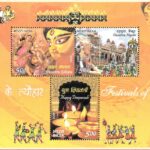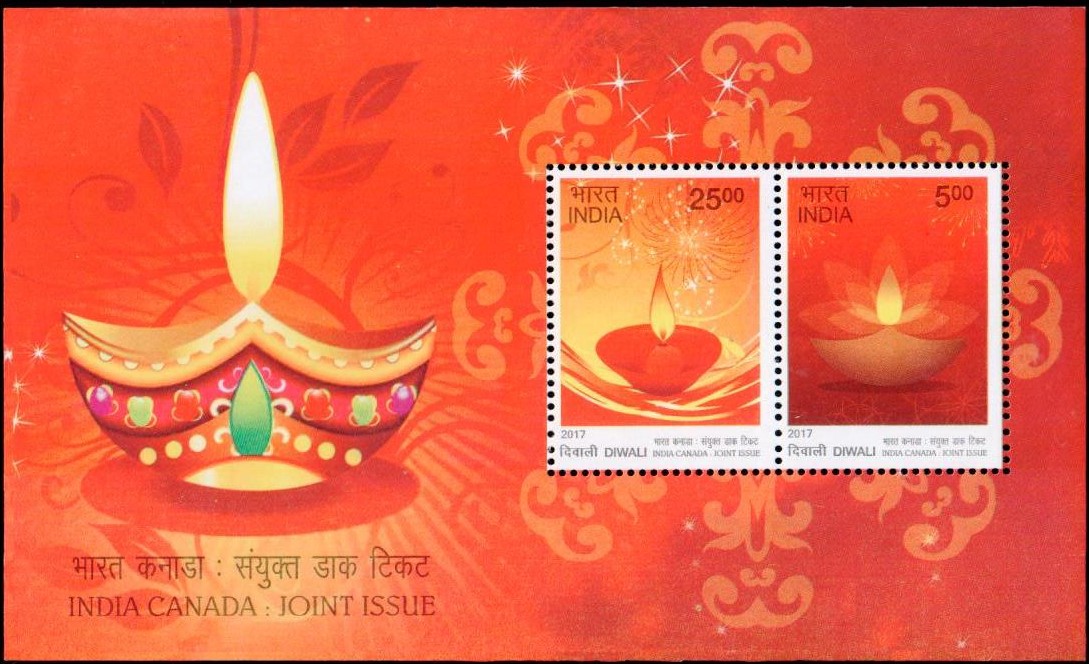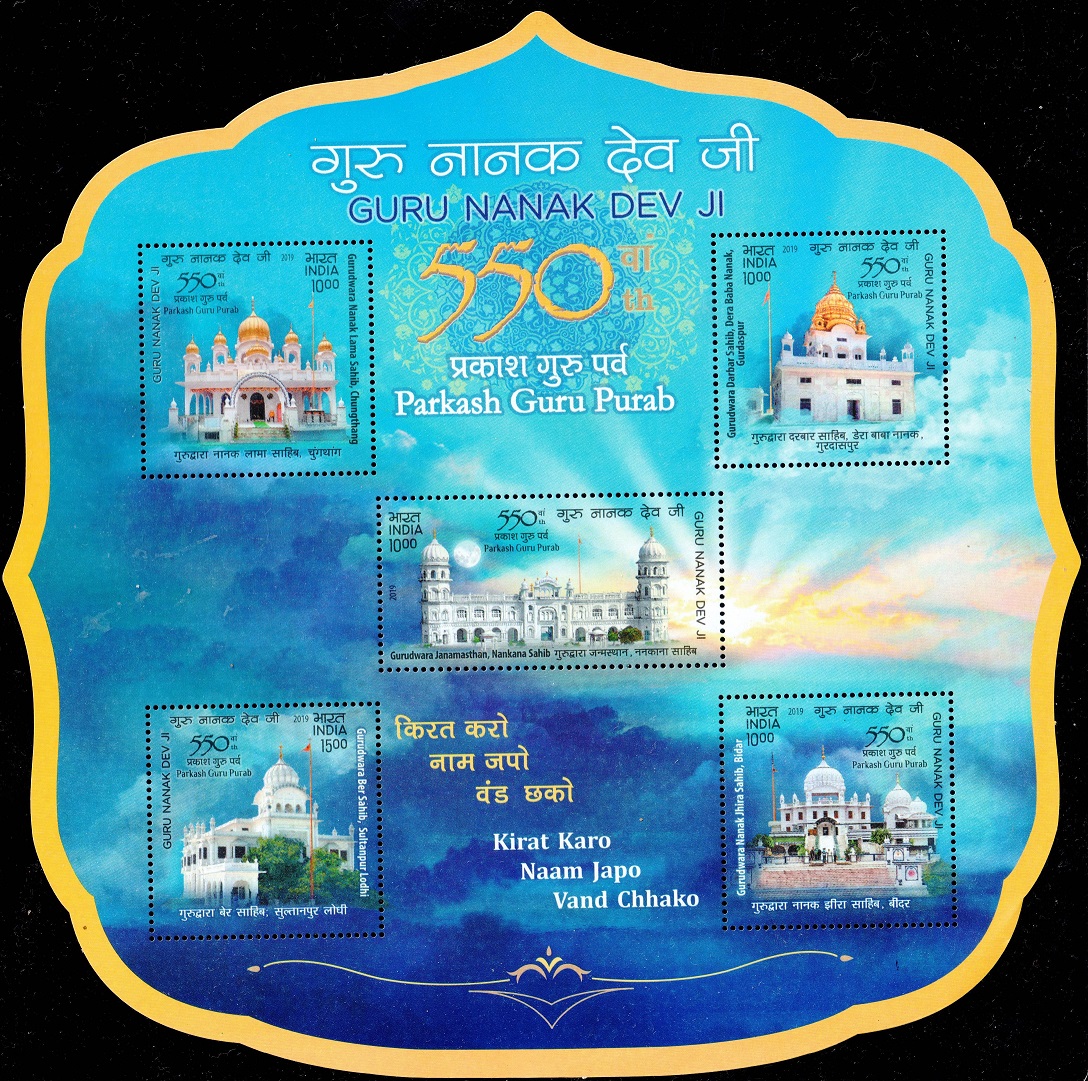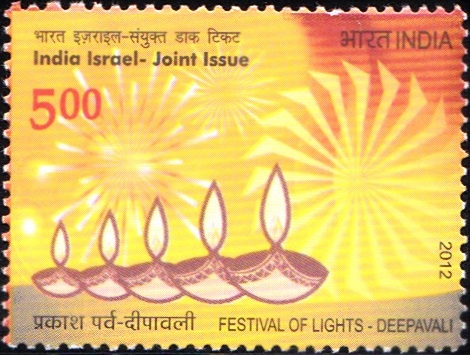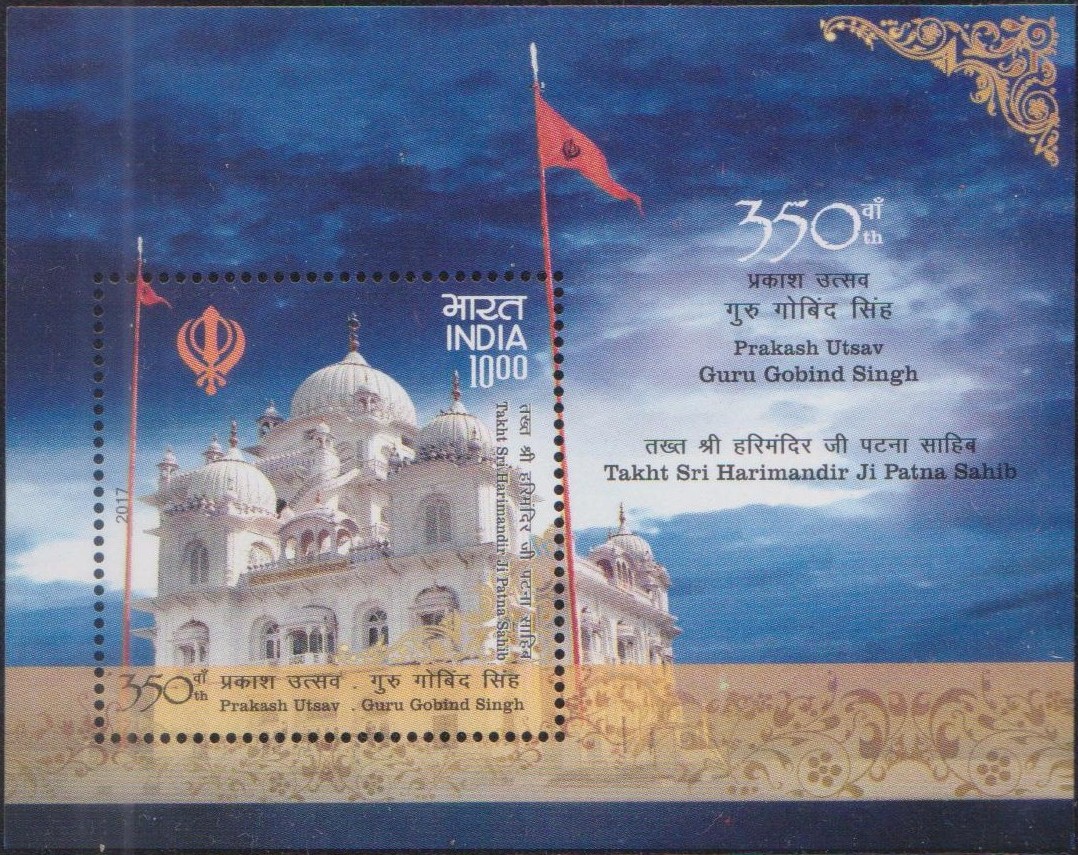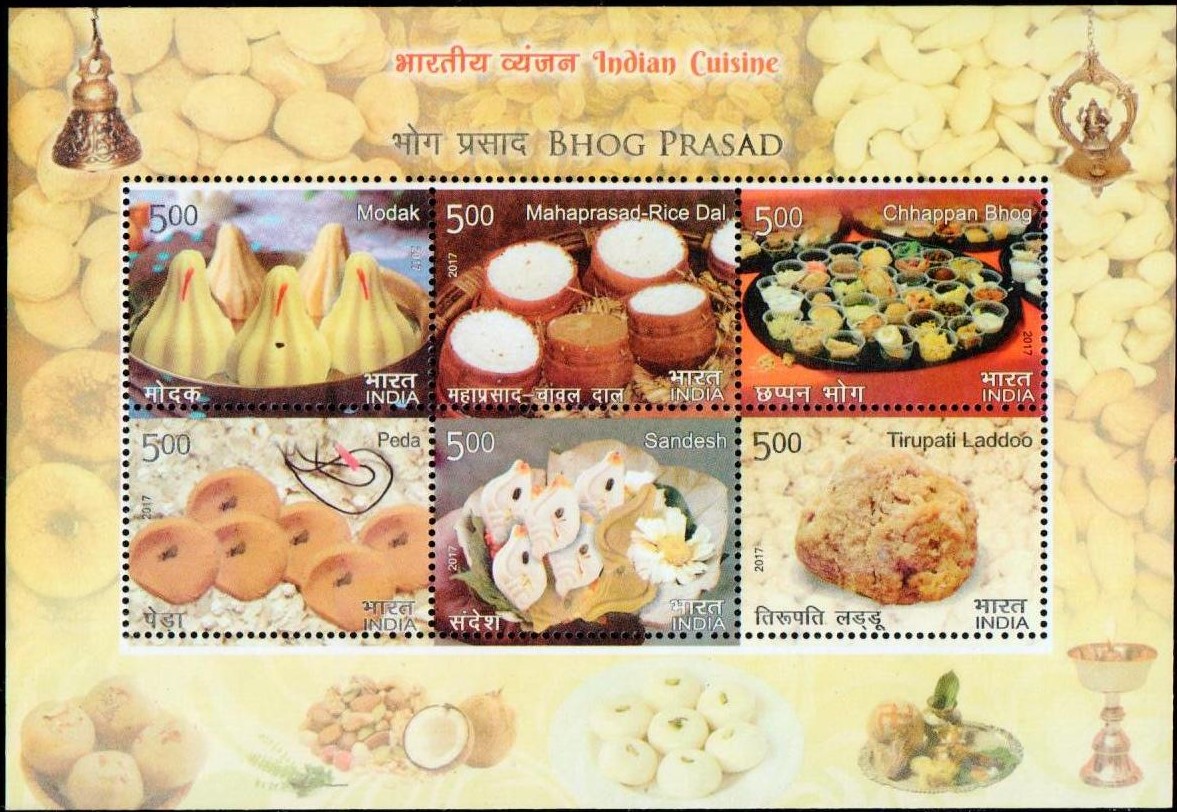
Indian Cuisine
Complete set of 24 nos. of commemorative postage stamps (4 Miniature sheets) on Cuisines of India : Bhog Prasad, Festival cuisine, Popular cuisine and Regional cuisine :
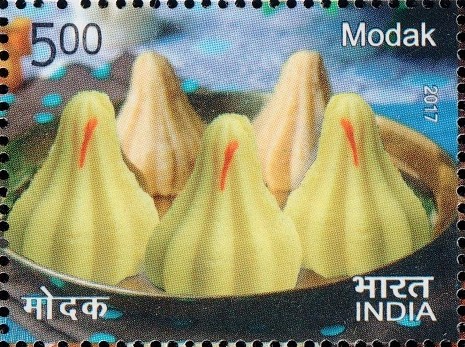
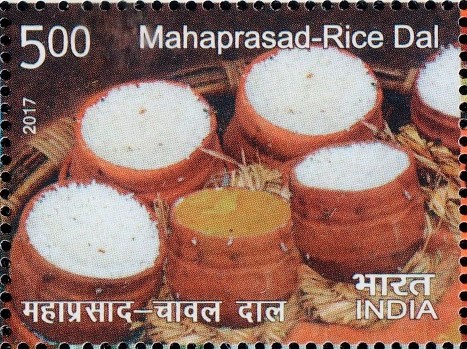
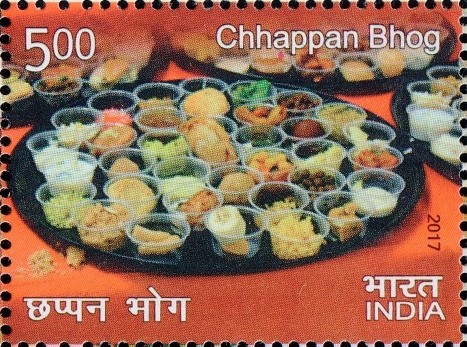
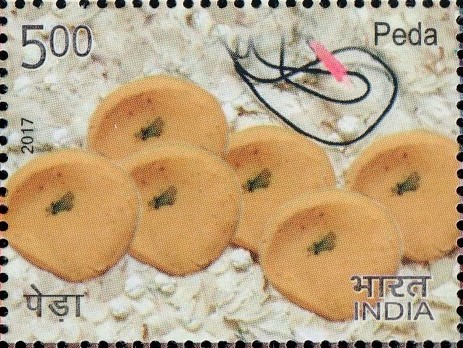
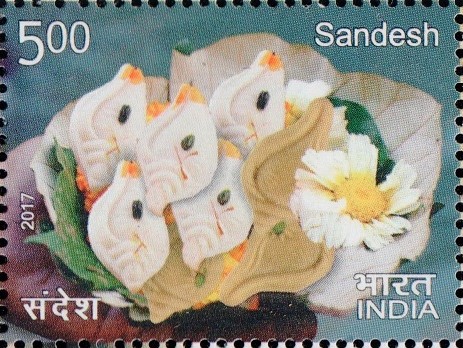
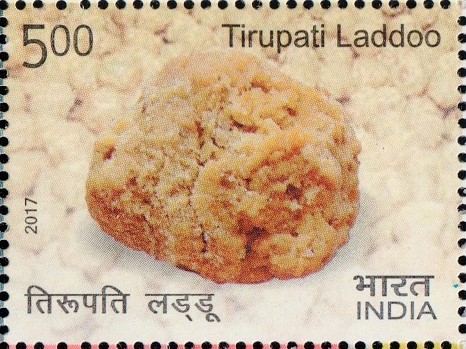

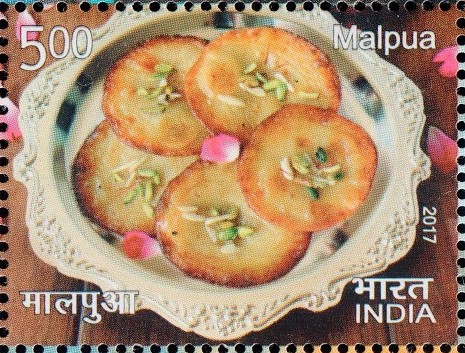
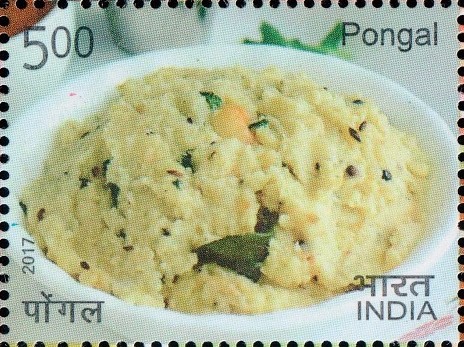
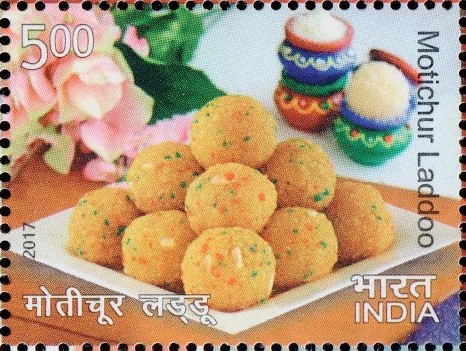
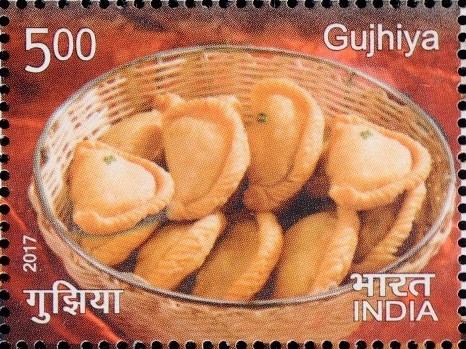
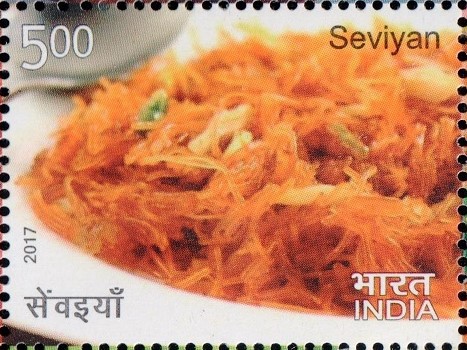
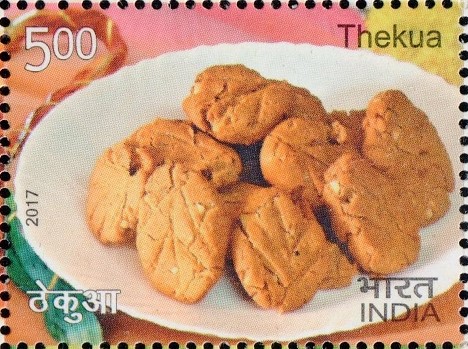
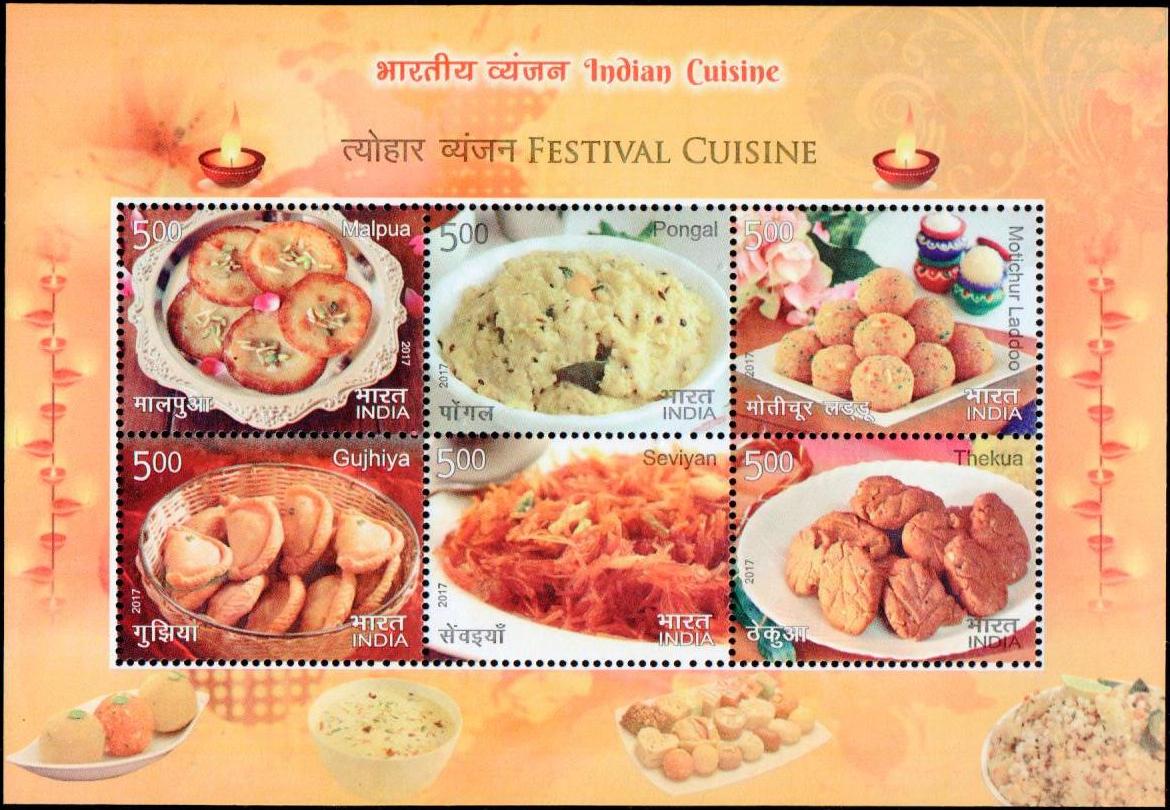
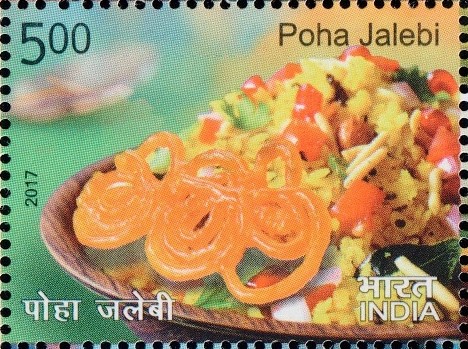
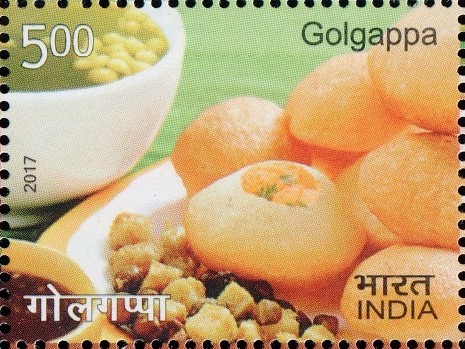
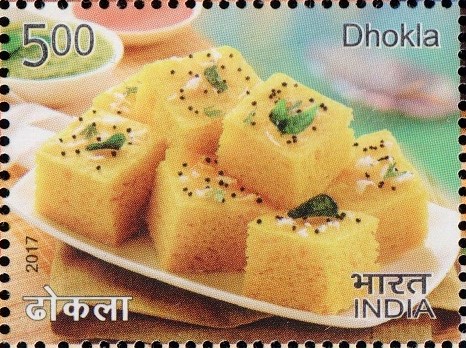
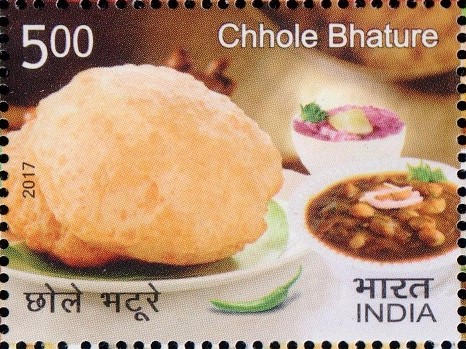
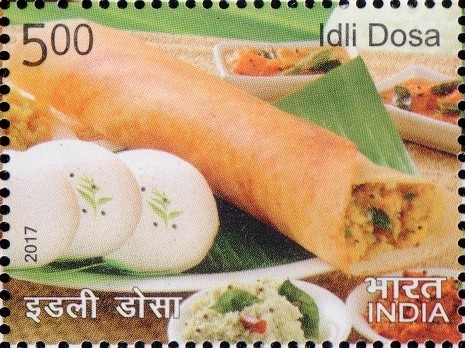
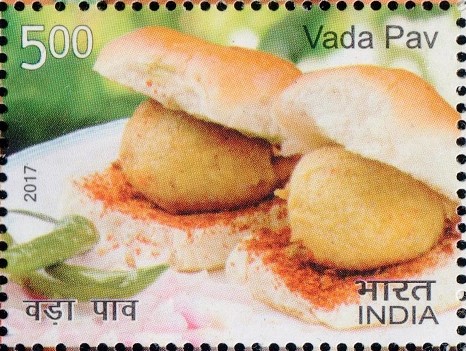
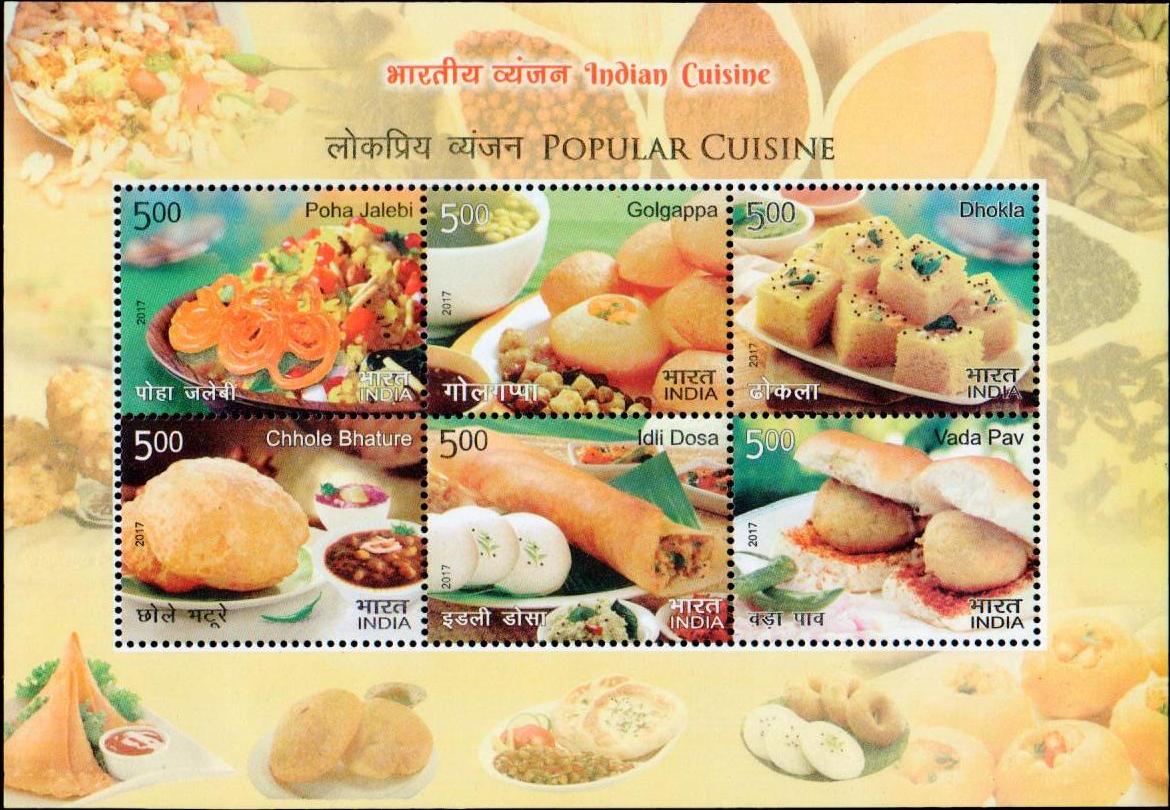
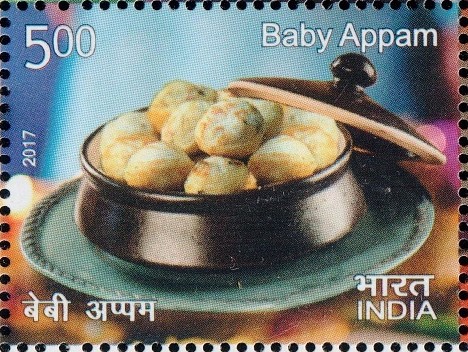
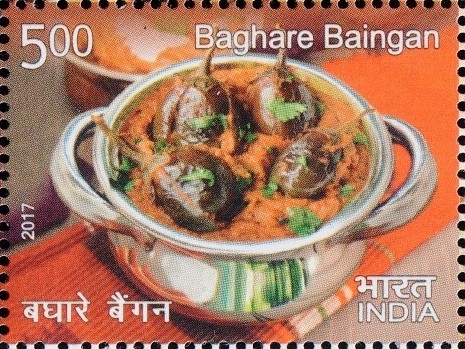
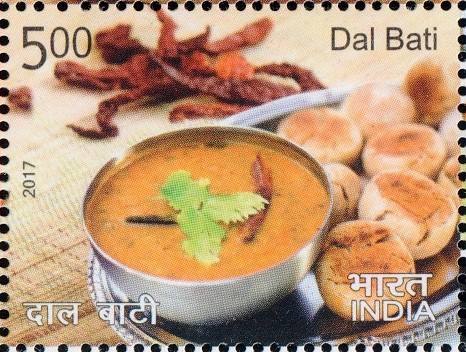
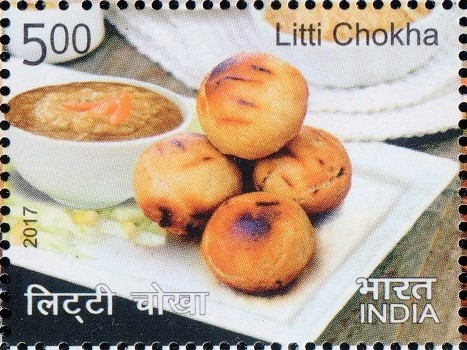
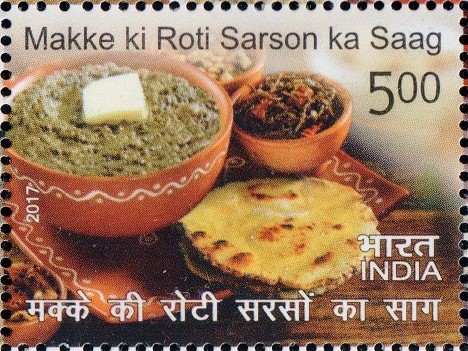
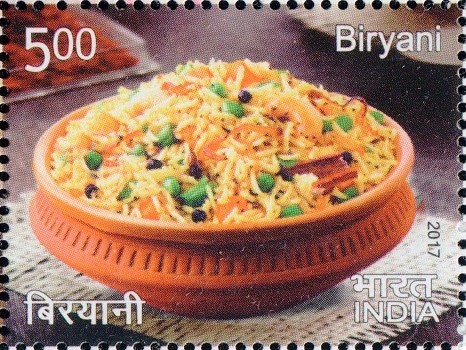
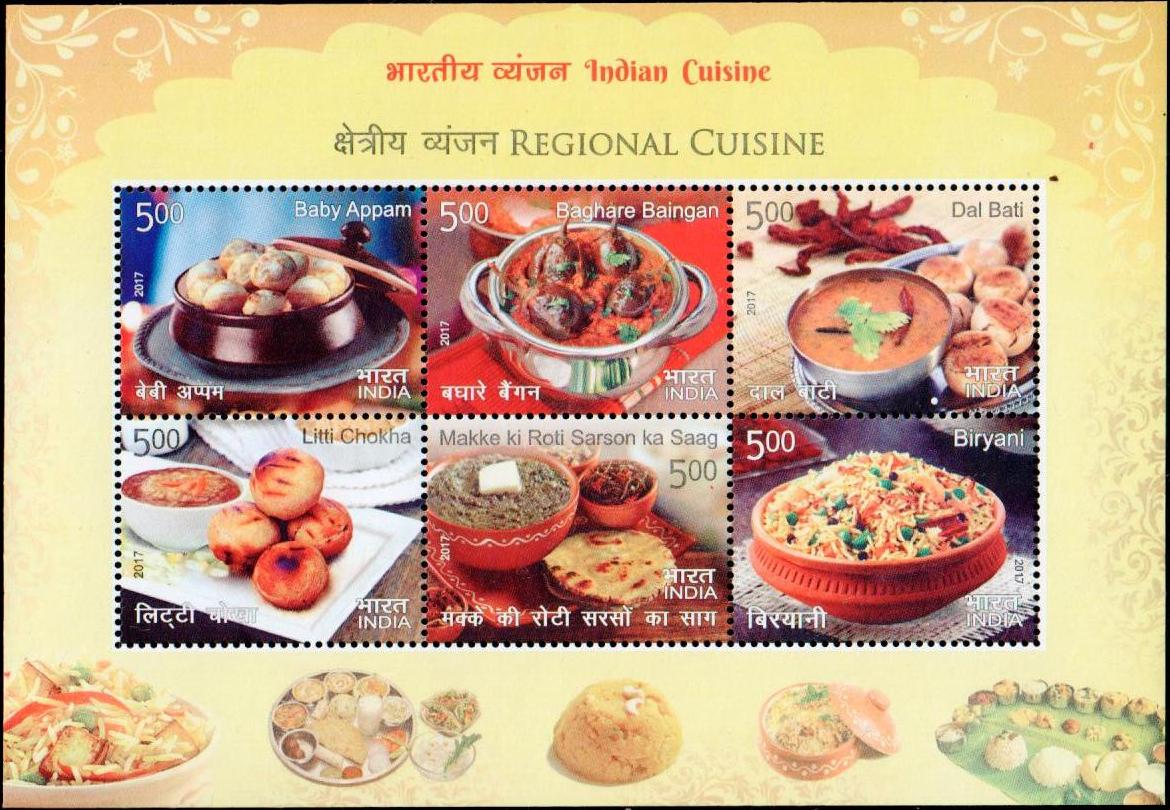 Issued by India
Issued by India
Issued on Sep 21, 2017
Credits :
Stamps/Sheetlets/Miniature Sheet/First Day Cover/Brochure/Cancellation Cachet : Shri Brahm Prakash
Type : Miniature Sheets, Mint Condition
Colour : Multi Colour
Denomination : 500 Paise (24)
Sheetlets Printed (5 types) : 1.1 Lakh each
Miniature Sheet Printed (4 types) : 1.1 Lakh each
Printing Process : Wet Offset
Printer : Security Printing Press, Hyderabad
About :
- Indian cuisine encompasses a wide variety of regional and traditional cuisines. Indian cuisine reflects an 8,000-year history of various groups and cultures interacting with the subcontinent, leading to diversity of flavours and regional cuisines found in modern-day India. Later, trade with British and Portuguese influence added to the already diverse Indian cuisine.
- The cuisine of India is one of the world’s most diverse cuisines, characterized by its sophisticated and subtle use of the many spices, vegetables, grains and fruits grown across India. India’s religious beliefs and culture have played an influential role in the evolution of its cuisine. Indian cuisine is still evolving, as a result of the nation’s cultural interactions with other societies.
- Department of Posts is pleased to release a set of 24 Commemorative Postage Stamps on the following four categories of Indian Cuisines in the form of Sheetlets and Miniature Sheets:
- Bhog Prasad:
- Some of these dishes are steeped in history while many of these special dishes are part of popular culture. The recipes of Temple Bhog Prasad’s have not changed over a long period of time which is high quality ingredients and large scale cooking. But the X-factor is probably the devotion and dedication of cooks at the temple kitchens. The six types of Bhog Prasad’s that are being depicted through postage stamps are Modak, Mahaprasad-Rice Dal, Chhappan Bhog, Peda, Sandesh & Tirupati Laddoo.
- Modak is an Indian sweet which has a filling of freshly grated coconut and jaggery while the outer soft shell is made from rice flour or wheat flour mixed with khova or maida flour. It is considered as favourite sweet of the Hindu deity, Ganesha.
- Mahaprasad is the term applied to items offered to Lord Jagannath in the holy Temple of Puri, located in Odisha, India. It includes different types of rice like ghee rice, mixed rice, cumin seed and ginger rice and Dal like sweet dal, plain dal mixed with vegetables, mixed Dal etc.
- Chhappan Bhog means 56 dishes which are offered to deity. The preparation of 56 different items for the occasion itself is a festival that enriches the culinary capacity of the region with amazing range of items and their variants.
- In Mathura, the birthplace of Lord Krishna, “Mathura ke Peda” is the favorite offering. These are made by cooking together fresh mawa, milk, sugar, and ghee with cardamom powder for flavour.
- Sandesh is a Bengali dessert created with milk and sugar which is commonly known as Sondesh in Bengal. Some recipes of Sandesh are prepared by chhena or paneer instead of milk itself.
- The practice of offering laddoo to Lord Venkateswara at Tirumala Venkateswara Temple was started in 1715. The items used for making Tirupati Laddoo’s are Gram flour, cashew nuts, cardamom, ghee, sugar, sugar candy and raisins. Tirupati Laddoo got Geographical indication tag which entitles that only Tirumala Tirupati Devasthanams can make and sell it.
- Some of these dishes are steeped in history while many of these special dishes are part of popular culture. The recipes of Temple Bhog Prasad’s have not changed over a long period of time which is high quality ingredients and large scale cooking. But the X-factor is probably the devotion and dedication of cooks at the temple kitchens. The six types of Bhog Prasad’s that are being depicted through postage stamps are Modak, Mahaprasad-Rice Dal, Chhappan Bhog, Peda, Sandesh & Tirupati Laddoo.
- Festive Cuisines:
- Festivals are the identity of Indian Society. The zeal of celebration and high spirits of enthusiasm is carried all over the festive season with some delectable festival dishes. There is a huge variety of dishes prepared on most popular festive occasions in different regions of India. The six types of Festive Cuisines that are being depicted through postage stamps are Malpua, Pongal, Motichur Laddoo, Gujhiya, Seviyan & Thekua:
- Malpua is a pancake served as a dessert or a snack originating from the Indian subcontinent. Malpua is popular in Odhisa, West Bengal and Maharashtra where it is served during festivals such as Bhai Dooj, Ganesh Chaturathi, Holi and Raksha Bandhan along with other sweets.
- Pongal is a rice dish popular in Tamil Nadu, Andhra Pradesh and Telangana. In Tamil “pongal” or in Telugu “pongu” means to “boil over” or “spill over”. In Kannada it is called Huggi. Every year in January month, Tamils and Telugus celebrate the harvest festival Pongal / Makar Sankranti during which Pongal is made.
- Laddoos are the most popular Indian sweet dish. No festival or occasion can be considered to be complete without laddoos. Amongst the enlarged variety of Laddoos, the most popular of all is Motichur Laddoo. Motichur Laddoo is made from fine boondi where the balls are tiny and is cooked with ghee or oil.
- Gujhiya is a sweet dumpling made with Suji/Maida/Wheat flour. It is filled with a mixture of grated and roasted dry fruits, khoya & coconuts. Gujhiyas are called Purukiya in Bihar. It is usually prepared and consumed during the festival of Holi.
- Seviyan is a traditional Indian sweet where seval is cooked in milk till it yields a rich and creamy texture. Seviyan garnished with saffron is usually served on the occasion of Eid.
- Thekua is traditional recipe of Bihar and Jharkhand. It is Sweet to taste, crunchy and crusty. Thekua is prepared especially for Chhath puja for offering to god.
- Festivals are the identity of Indian Society. The zeal of celebration and high spirits of enthusiasm is carried all over the festive season with some delectable festival dishes. There is a huge variety of dishes prepared on most popular festive occasions in different regions of India. The six types of Festive Cuisines that are being depicted through postage stamps are Malpua, Pongal, Motichur Laddoo, Gujhiya, Seviyan & Thekua:
- Popular Cuisine:
- Indian streets are full of its popular cuisines and well famous for tasty food items. These foods are considered to be favourite as all time snacks for its mouth-watering flavour. The six types of Popular Cuisines that are being depicted through postage stamps are Poha Jalebi, Golgappa, Dhokla, Chhole Bhature, Idli-Dosa & Vada Pav:
- Poha-Jalebi is the street food from Indore, Madhya Pradesh where it is usually served with a unique combination of Jalebi, Sev, Usal, sliced onions and funnel seeds.
- Golgappa is a common street snack in several regions of the country. It consists of a round, hollow puri, fried crisp and filled with a mixture of flavoured water (commonly known as imli pani), tamarind chutney, chili, chaat masala, potato, onion and chickpeas. It is called by different names in different regions such as it is called Panipuri in Maharashtra; paani ke batashe in Haryana; fulki in Madhya Pradesh; golgappa in Uttar Pradesh and Delhi; Phuchka in West Bengal and Bihar; Pakodi in Gujarat and Gup Chup in parts of Odisha, South Jharkhand and Chhattisgarh.
- Dhokla is a vegetarian food item that originates from Gujarat. It is made with a fermented batter derived from rice and split chickpeas. Dhokla can be eaten for breakfast, as a main course, as a side dish, or as a snack.
- Chhole Bhature is a combination of chana masala (spicy chickpeas) and fried bread called bhature made from maida flour. Chhole Bhature is a world famous recipe from the Punjabi cuisine. It is very popular in major urban cities of India. Delhi is well famous for its chhole bhature, commonly eaten for breakfast or snacks.
- Idli-Dosa is a typical part of the South Indian diet and popular all over the Indian subcontinent. Dosa, a type of pancake, is made from a fermented batter and served with sambar, stuffing of potatoes or paneer and chutney. Idli is a savoury cake that are made by steaming a batter consisting of Urad dal and rice.
- Vada Pav is a vegetarian fast food dish native to Maharashtra. The dish consists of a deep fried potato dumpling placed inside a bread bun (pav) sliced almost in half through the middle. It is generally accompanied with one or more chutneys and a green chilli pepper.
- Indian streets are full of its popular cuisines and well famous for tasty food items. These foods are considered to be favourite as all time snacks for its mouth-watering flavour. The six types of Popular Cuisines that are being depicted through postage stamps are Poha Jalebi, Golgappa, Dhokla, Chhole Bhature, Idli-Dosa & Vada Pav:
- Regional Cuisine:
- Regional cuisines in India may vary based upon food availability and trade, varying climates, cooking traditions and practices, and cultural diversity. The cuisine of each geographical region includes a wide assortment of dishes and cooking techniques reflecting the varied demographics of the ethnically diverse Indian subcontinent. The six types of Regional Cuisines that are being depicted through postage stamps are Baby Appam, Baghare Baingan, Dal Bati, Litti Chokha, Makke Ki Roti Sarson Ka Saag & Biryani:
- Baby Appam is a type of pancake made with fermented rice batter and coconut milk. It is a common food in Kerala and Tamil Nadu. It is eaten most frequently for breakfast or dinner.
- Baghare Baingan is a popular Indian Cuisine of eggplant/brinjal curry of Hyderabad. It is also used as a side dish with the Hyderabadi biryani. Baghare baingan was introduced during Mughal period from Tashkent, then became popular in Hyderabad.
- Dal Bati is an Indian dish comprising dal (lentils) and Bati (hard wheat rolls). It is popular in Rajasthan, Uttar Pradesh and Madhya Pradesh. Dal is prepared using tur dal, chana dal etc. and Bati is a hard bread made up of wheat flour.
- Litti along with chokha, is a complete meal popular in Indian states of Bihar, Jharkhand and parts of Eastern Uttar Pradesh. It is a dough ball made up of whole wheat flour and stuffed with Sattu (roasted chickpea flour) mixed with herbs and spices and then roasted over coal or cow dung cakes or wood and tossed with lots of ghee.
- Sarson Ka Saag is a popular dish from the Punjab regions made from mustard greens and spices. The dish is regarded as the traditional way to prepare saag and is usually served with Makke ki Roti (unleavened corn bread). It is served with either butter or more traditionally with ghee.
- Biryani is a South Asian mixed rice dish with its origins among the Muslims of the Indian subcontinent. It is generally made with spices, rice and meat. Different varieties of biryani developed in Indian states are Mughal cuisine of Delhi, Awadhi cuisine of Lucknow and Hyderabadi Biryani from Telangana.
- Regional cuisines in India may vary based upon food availability and trade, varying climates, cooking traditions and practices, and cultural diversity. The cuisine of each geographical region includes a wide assortment of dishes and cooking techniques reflecting the varied demographics of the ethnically diverse Indian subcontinent. The six types of Regional Cuisines that are being depicted through postage stamps are Baby Appam, Baghare Baingan, Dal Bati, Litti Chokha, Makke Ki Roti Sarson Ka Saag & Biryani:
- Text : Based on the material available on internet.
Subscribe
Login
0 Comments


